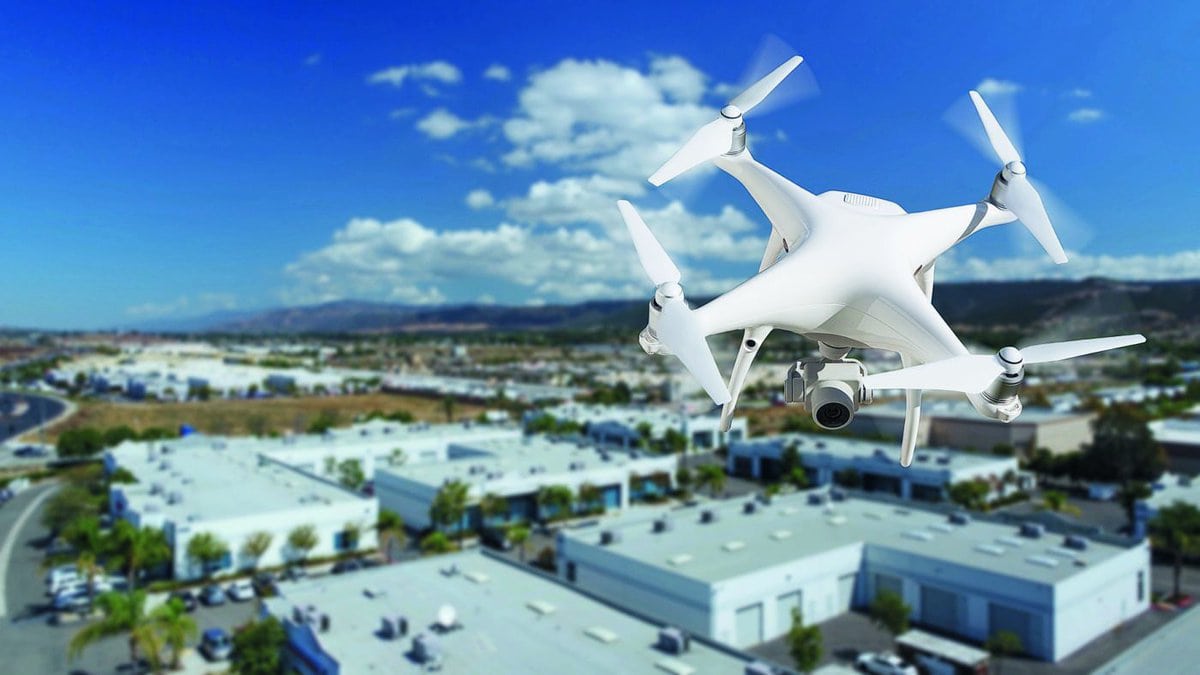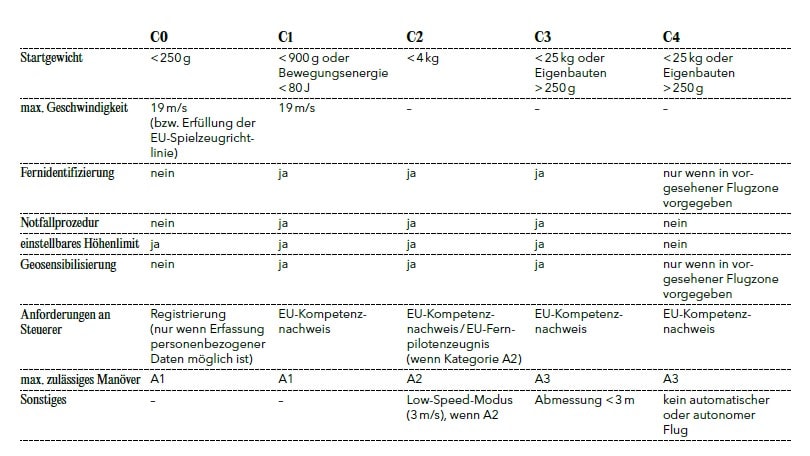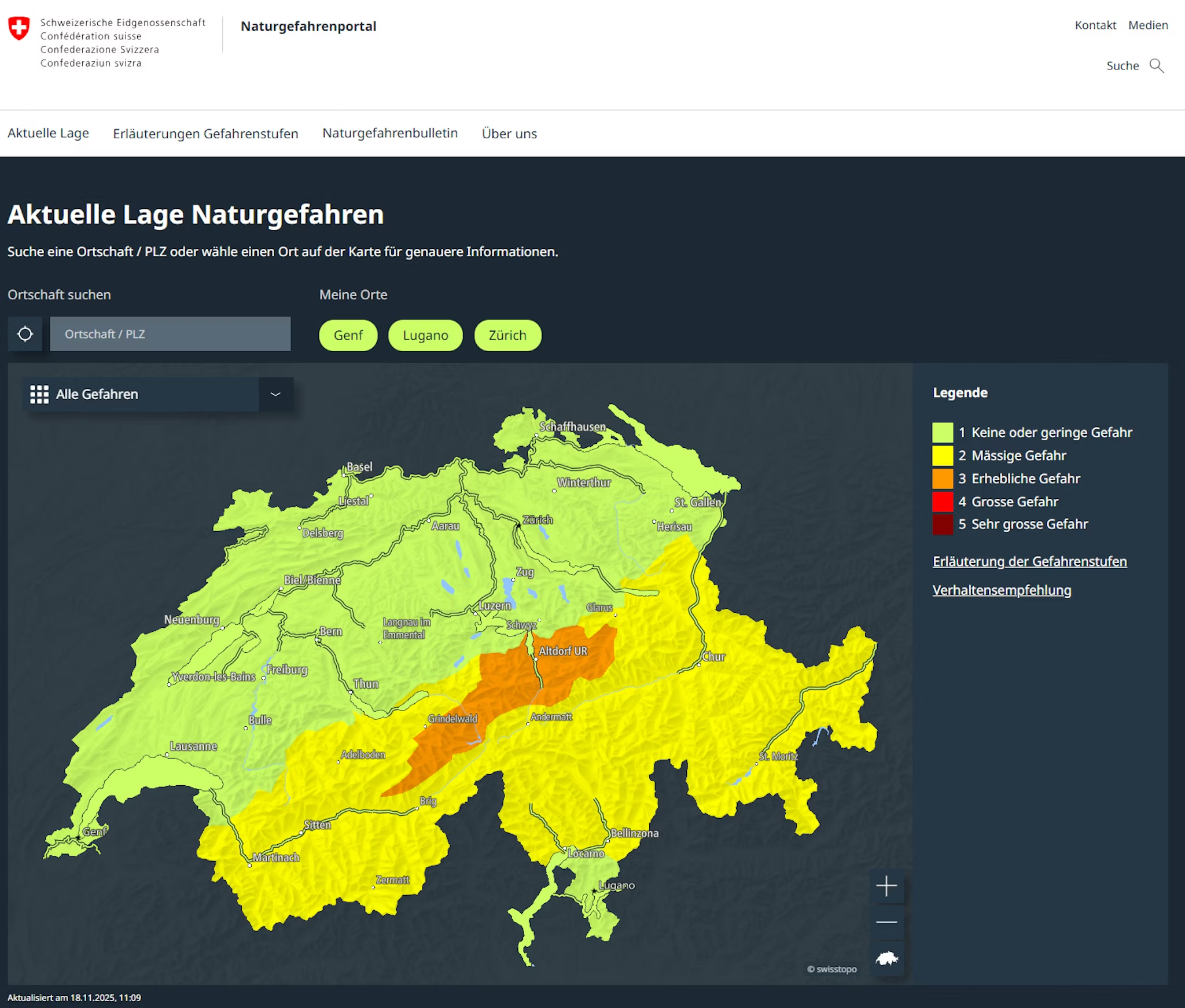Legal basis for the use of drones
EU Regulations 2019/945 and 2019/947 form the basis for the operating regulations for UAS (Unmanned Aerial Systems). This harmonized the current and sometimes highly divergent national legislation. The regulations apply not only in the EU member states, but also in Liechtenstein and Switzerland.

The ordinance regulates the use of UAVs in the open air. It does not apply if, for example, recordings are to be made at a sports event in a hall. In this case, "only" the usual occupational health and safety regulations apply.
Another special case are so-called "tethered drones", i.e. UAVs that are permanently connected to a ground station via power and data cables. The EU regulations only apply here in part or by way of derogation.
For Germany, for example, a significant change was that a distinction is no longer made between private and commercial use of UAVs (Unmanned Aerial Vehicles). Instead, UAVs are generally divided into three operating categories.
Open category (Open):
- Intended for UAV and flights with low and everyday use scenarios
- Classification into seven risk classes (C0 to C6)
- Further subdivision into three subcategories that regulate the distances to people and buildings
- The majority of UAV missions fall into this category
Category Specific:
- UAV deployments that exceed at least one requirement of the "Open" category
- Use in this category requires an individual exemption permit from the relevant aviation authority, which may also impose conditions
Certified category:
- Intended for special applications (e.g. in industry, transportation, etc.)
- Special certification processes and licenses are required for the UAV and the controller
- The aviation authority may impose conditions on the operation
In the following, we mainly look at the "Open" category, as it defines the main principles of use.
As mentioned above, the UAVs in this category are divided into seven risk classes. Only classes C0 to C4 are relevant for our analysis, as C5 and C6 are special cases of class C3.
There are similarities for (almost) all classes:
- Maximum altitude 120 meters above ground level (Above Ground Level, AGL); however, this only applies to C0 to C3
- Flights are only permitted within sight of the pilot, with two exceptions
- The UAV flies in "follow-me mode" at a maximum distance of 50 meters from the controller or
- There is an observer who has eye contact with the UAV and constant contact with the controller
- The operator of the UAV must have liability insurance for the device
- The minimum age of the driver (except for category C0) must be 16 years old; however, the age can be reduced by up to four years by national regulations
- Operators (owners) of UAVs must register with the German Federal Aviation Office (LBA) and receive an electronic ID; this must be visibly attached to the UAV
- Exception: UAVs with a take-off weight of less than 250 grams if they do not have sensors for recording personal data (e.g. a camera)
- No dangerous goods may be transported or objects dropped.
The table shows the individual requirements that differentiate the respective classes. The manufacturer of the device determines which category a UAV falls into.
It is clear that the EU primarily classifies drones in category C0 as toys. The majority of privately used UAVs are therefore likely to be found in this and category C1. C2 and C3 are likely to primarily include (semi-)professional systems, i.e. also those that could potentially be of interest for use in plant security. Category C4 is mainly intended for remote-controlled model aircraft.
Within the risk classes C0 to C6, a sub-categorization is made, which primarily regulates the approach to people, but also the distance to buildings.
Category A1:
Flying close to uninvolved persons is permitted. Flying over people should be avoided. If this is not possible, the overflight must be ended as quickly as possible.
Category A2:
A horizontal distance of at least 30 meters from uninvolved persons must be maintained. In low-speed mode (3 m/s), the drone may approach uninvolved persons up to a maximum of five meters or in direct proportion to the flown altitude.
Category A3:
A minimum distance of 150 meters from people must be maintained. There must be no reasonable danger to uninvolved persons. In addition, a minimum distance of 150 meters from residential, commercial, industrial or recreational areas must be maintained.
If you look at the requirements for category A3, you almost automatically come to the conclusion that no UAV in risk class C3 is actually allowed to operate in an urban environment unless it has a special permit to do so. However, this would automatically place it in the "Specific" operating category.
Two undefined terms still need to be clarified:
a) Person (not) involved:
The regulation defines "persons involved" as the controller of the UAV, any observers, the operator of the UAV and the client of the operation. All persons who have nothing to do with the specific use of the UAV, e.g. visitors to an event at which recordings are to be made by UAV, are therefore considered "uninvolved persons".
b) Crowds of people:
The term "crowd" is defined in different ways. Here is a selection that UAV users can use as a guide:
Bavarian Higher Regional Court: "A gathering of people is understood to mean the gathering of a large number of people, i.e. such a large majority of people that their number is not immediately manageable and the arrival or departure of an individual is no longer important." (BayObLG, 26.08.1987, 3 Ob Owi 118/87)
Federal Aviation Authority: "If there are more than 12 people, this is to be assumed on a regular basis." (NfL-1-837-16)
"A large number of people standing so close together that it is almost impossible for a single person to move away from the crowd." (LBA A1/A3 Training)
Further editions
In addition to the classification into operating and risk classes, the EU has imposed further requirements on manufacturers and operators of UAVs, some of which will also have a significant impact on the safety of companies. The main changes include the fact that UAVs in classes C1 to C3 must have the following systems in future.
1. emergency procedures
The drone must have a mode that prevents the device from crashing uncontrollably in the event of interference in the radio signals between the controller and the drone. This can be an automatic emergency landing function or a "return-to-home" mode, for example.
2. geosensitization
In the past, various manufacturers have already used the UAV's firmware to prevent or at least warn the pilot that a drone is flying into restricted or no-fly zones (e.g. government buildings, airports, nuclear facilities, etc.).
Since 2023, every drone in classes C1 to C3 must have such a system. Model aircraft (class C4) require this if they are to be operated in a corresponding flight zone.
The states in which the regulation applies must provide mandatory data on such zones in a standardized format. A UAV must retrieve this data before take-off and at least warn the pilot if there is a risk of flying into a restricted or prohibited zone.
3. remote identification
The regulation that all UAVs in risk classes C1 to C3 must now have a remote identification option, similar to transponders on "conventional" aircraft, is likely to have the greatest impact.
The drone must permanently transmit the following data openly via (mobile) radio:
- Operator number of the UAV
- Serial number
- Position and current altitude
- Flight direction
- Airspeed
- Position of the controller or starting point of the UAV
In principle, anyone with a smartphone and a corresponding app can fully view and assess the air situation in their vicinity.
Consequences
Remote identification in particular will considerably simplify the issue of drone detection. Most UAVs can be automatically identified and tracked in this way. The "only" UAVs that remain are those whose pilots deliberately avoid identification and tracking and for which it can therefore be assumed with a certain degree of justification that they are intentionally committing unauthorized acts. Commercial detection systems will also be necessary for this in the future. However, users should think even more carefully than before about which buildings or areas need to be monitored with such systems. It would make sense, for example, to retrofit control centres with such reception and display options in order to monitor what is happening around the location(s) and to be able to take (organizational) measures if necessary.
The excuse of many pilots that they were unaware that their UAV was operating in a restricted or no-fly zone (according to surveys, many were indeed unaware) no longer applies.
Prosecution in the event of breaches of the regulations is also simplified, as the operator of the UAV can be easily identified via remote identification and possibly even its current location can be determined.
Supplementary information:
Use of the Open category will rarely be sufficient for meaningful use in plant security, if only because the flight would then only be permitted within sight of the pilot or an observer or in Follow Me mode. In most cases, however, this is likely to run counter to the intended purpose of such use.
It is therefore highly likely that the Specific operating category will become necessary. The prerequisite for this is approval from the responsible state aviation authority. The following must be submitted for the corresponding application:
- the operating manual of the UAV
- a risk assessment of the intended use in accordance with SORA (Specific Operational Risk Assessment), see https://tinyurl.com/ycyam7n6
- Coordinates of the intended flight area










